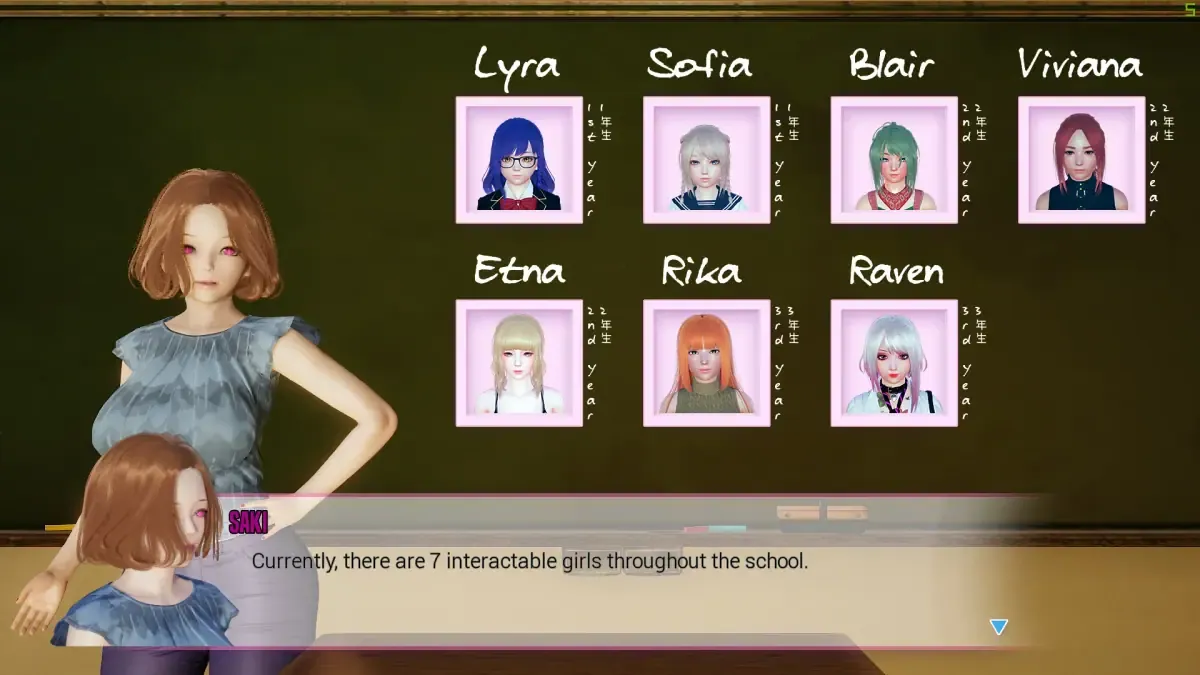
Love and Submission
Play Love and Submission
Love and Submission review
Explore Gameplay, Story, and Unique Features of Love and Submission
Love and Submission is a captivating interactive game that blends narrative depth with player choice, offering a unique experience in its genre. This article dives into the core elements of Love and Submission, exploring its gameplay mechanics, story arcs, and character dynamics. Whether you’re new or looking to deepen your understanding, this guide provides practical insights and personal reflections to enhance your journey through the game.
Gameplay Mechanics and Player Choices in Love and Submission
Ever feel like your choices in a game don’t really matter? 😕 Like you’re just along for a pre-written ride? Well, let me tell you, Love and Submission gameplay is the complete opposite. From the moment you start, you realize that every single click, every dialogue option, and every action has weight. This isn’t just a story you watch; it’s a world you actively build and influence with every decision you make. The core of this experience is the profound impact of player choices in Love and Submission, which truly sets it apart in the genre of interactive story gameplay.
The game throws you into a rich, character-driven narrative where you must navigate complex social dynamics, build alliances, and manage your resources. The beauty of the game mechanics Love and Submission employs is how seamlessly they are woven into the story. You’re not just managing stats on a screen; you’re managing the hopes, fears, and trust of the characters around you. It’s this deep integration that makes the decision making in Love and Submission so incredibly compelling and, at times, nerve-wracking! 😅
How Player Decisions Shape the Story
The phrase “butterfly effect” was practically invented for this game. 🦋 A seemingly minor choice in Chapter 2 can dramatically alter which characters are even present for a major event in Chapter 5. The narrative is not a single path with minor detours; it’s a vast, branching web of possibilities. Your player choices in Love and Submission directly control the narrative’s direction, leading to multiple unique endings for each major character arc.
This system of narrative choices game design means there are no truly “right” or “wrong” answers, only choices that lead to different outcomes and relationships. Are you compassionate and forgiving, or are you pragmatic and stern? Your chosen personality will open some doors while permanently closing others. The game remembers everything, creating a deeply personal story that is uniquely yours.
To give you a clearer picture, here’s a table comparing how different early-game approaches to a key character can diverge the story later on:
| Your Early Choice | Short-Term Outcome | Long-Term Narrative Consequence |
|---|---|---|
| Offer unwavering trust and support | Gain a loyal ally; immediate help in a crisis. | This character becomes your staunchest defender, but may become overly dependent, creating a different kind of conflict later. |
| Demand proof of loyalty | Relationships becomes strained; short-term obstacle. | The relationship builds on a foundation of mutual respect and earned trust, leading to a more resilient, equal partnership in the final acts. |
| Act with suspicion and hostility | Create an immediate enemy; lose a potential resource. | This character aligns with your rivals, becoming a significant antagonist who knows your weaknesses, making the endgame much harder. |
Exploring Game Features and Interface
A great story needs a great stage, and the game interface Love and Submission provides exactly that. 🎭 It’s designed for immersion, pulling you into its world without cumbersome menus getting in the way. The main screen is clean and intuitive, typically divided into a few key areas:
- The Narrative Window: This is where the story unfolds, with beautiful artwork and crisp text.
- The Character Panel: 👥 Always visible, this shows the characters present in the current scene along with their current disposition towards you (often represented by meters for trust, affection, respect, etc.). This is your vital dashboard for decision making in Love and Submission.
- The Action/Choice Menu: This is your toolbox. Here you’ll see your available responses, actions, or questions. Options greyed out mean you lack the necessary skill, item, or relationship level to choose them—a great incentive to revisit scenes later!
A standout Love and Submission gameplay feature is the “History Log” or “Relationship Ledger.” This brilliant tool allows you to review every major interaction you’ve had with any character. Forgetting why someone is angry with you? 🤔 The ledger will remind you of the exact conversation from three hours ago. It’s an essential feature for keeping track of the complex web you’re weaving and is a huge help for the narrative choices game enthusiast who wants to see all the story branches.
Tips for Navigating Complex Scenarios
Alright, let’s get practical. With so much on the line, how do you steer your story toward the outcomes you desire? Here’s my hard-earned advice from spending countless hours in this world.
First and foremost, save often, and in multiple slots! 💾 This is the golden rule for any game with heavy interactive story gameplay. Don’t just rely on a single autosave. Before any major decision, create a new manual save. This allows you to experience different outcomes without having to replay the entire game from the start. Want to see what happens if you betray an ally? Save, try it, reload, and you can continue with your original plan guilt-free!
Second, talk to everyone, and more than once. Characters reveal new information and options as the story progresses and as your relationship with them deepens. A conversation that seemed pointless early on might be the key to unlocking a critical path later.
Third, specialize your approach. You can’t be everyone’s best friend. The game mechanics Love and Submission uses are designed to prevent a “perfect” playthrough. Instead of trying to please all characters equally, focus on building a few deep, meaningful relationships. This is often more rewarding and narratively coherent than having everyone simply tolerate you.
My Pro Tip: Keep a notepad handy (digital or physical) to jot down character names, their quirks, and promises you’ve made. Your future self will thank you!
I learned this the hard way. Early on, I met a seemingly minor character, Elara, a servant who was being unfairly blamed for a broken vase. I was in a rush to meet a main story objective and chose the quick, dismissive dialogue option to get on with it. “It’s just a vase, don’t worry about it,” I said, thinking I was being nice. 🏺
Big mistake. My choice was interpreted as not valuing the property or the rules of the household. This minor decision didn’t just affect Elara; it was witnessed by the head of security. Later, when I needed a favor from that very character—access to a restricted area to gather evidence to clear my name—he remembered me as someone who disregarded order. He refused to help, creating a massive obstacle that forced me to find a far more dangerous and convoluted way to proceed. That one, two-second choice cost me hours of gameplay. It was a brutal but brilliant lesson in how every player choices in Love and Submission truly echoes throughout the entire experience.
Embrace the complexity. There’s no need to fear making a “bad” choice. Often, the most interesting and dramatic stories come from recovering from a mistake or dealing with an unexpected consequence. The Love and Submission gameplay loop is all about living with your decisions and seeing your unique story unfold, one impactful choice at a time.
Love and Submission offers a rich, immersive experience where your choices truly matter. Understanding its gameplay mechanics and narrative depth can greatly enhance your enjoyment and engagement. Dive into the game with an open mind and explore the many paths it offers. Ready to start your journey? Embrace the adventure and see where your decisions lead you.


















